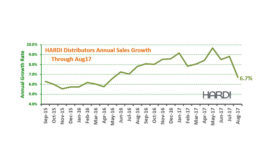Home » economic reports
Articles Tagged with ''economic reports''
Architecture Billings Index Increases in October
The new projects inquiry index was 60.2, up from a reading of 59.0 the previous month
November 17, 2017
US Economic Growth Accelerates in Second Quarter
Indicates the ongoing economic recovery
September 6, 2017
Copyright ©2024. All Rights Reserved BNP Media.
Design, CMS, Hosting & Web Development :: ePublishing











